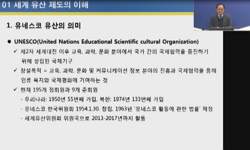우리나라 대학 교육은 근대 개혁 이후부터 시작되었으며 한국인, 일본인, 그리고 외국 선교사들에 의해 설립된 고등교육기관들의 주도로 이루어졌다. 광복 이후, 사립 학교들이 대학으로 인...
http://chineseinput.net/에서 pinyin(병음)방식으로 중국어를 변환할 수 있습니다.
변환된 중국어를 복사하여 사용하시면 됩니다.
- 中文 을 입력하시려면 zhongwen을 입력하시고 space를누르시면됩니다.
- 北京 을 입력하시려면 beijing을 입력하시고 space를 누르시면 됩니다.
캠퍼스타운의 유·무형적 유산속성의 활용을 통한 대학문화 활성화 연구 = A Study on the Revitalization of University Culture by Utilizing the Properties of tangible and intangible Heritage in Campus Town
한글로보기https://www.riss.kr/link?id=T16914053
- 저자
-
발행사항
서울 : 한국전통문화대학교 일반대학원, 2024
-
학위논문사항
학위논문(석사) -- 한국전통문화대학교 일반대학원 , 국제문화유산협동과정 문화유산학 , 2024. 2
-
발행연도
2024
-
작성언어
한국어
- 주제어
-
발행국(도시)
충청남도
-
형태사항
119 ; 26 cm
-
일반주기명
지도교수: 김영재
-
UCI식별코드
I804:44031-200000743419
- 소장기관
-
0
상세조회 -
0
다운로드
부가정보
국문 초록 (Abstract)
우리나라 대학 교육은 근대 개혁 이후부터 시작되었으며 한국인, 일본인, 그리고 외국 선교사들에 의해 설립된 고등교육기관들의 주도로 이루어졌다. 광복 이후, 사립 학교들이 대학으로 인가를 받기 시작했고, 소수 의 지식인 계층이 향유했던 대학 교육은 현재 대부분의 사람이 경험할 수 있는 한 가지의 문화이자 기관으로 자리 잡았다. 이에 따라 사람들의 기 억으로 형성되기 시작한 대학문화가 정의되기 시작했으며, 대학-지역사회 사이에 영향을 끼쳤다. 캠퍼스타운, 대학 마을이자 대학가로고도 불리는 이 공간은 대학생들의 학사 일정과 캠퍼스의 위치 등의 다양한 요인들에 의해 발전했는데, 코로나 펜데믹 이후 학생들의 부재에 따른 침체를 겪으 며 단조로운 캠퍼스타운의 상권에 큰 타격을 입혔다. 코로나 종식 후, 학생들이 학교에 복귀했음에도 불구하고 캠퍼스와 캠퍼스타운의 단절은 심 해다. 따라서, 본 연구는 단절 요인을 분석하고 이에 대한 방안을 모색하려는 목적으로 연구를 진행했다.
본 연구는 대학문화와 캠퍼스타운의 개념에 대해 정의하고, 고찰하고자 했다. 캠퍼스타운과 대학 사이의 단절을 일으키는 요인을 분석하기 위해 세 곳의 연구 대상지를 선정했는데, 연세대학교 신촌 캠퍼스, 동아대학교 승학캠퍼스, 마지막으로 동아대학교 부민캠퍼스이다. 신촌 캠퍼스타운은 연세대학교를 비롯하여 이화여자대학교, 서강대학교, 홍익대학교 등 대형 종합 사립 대학교들을 대거 보유하고 있고, 우리나라에서 가장 먼저 형성 되기 시작한 캠퍼스타운이기에 연구할 가치가 있다고 판단했다. 두 번째 로 동아대학교는 하나의 캠퍼스가 아닌 세 개의 멀티 캠퍼스를 각 목적에 맞게 운영 중인데, 이 중에서도 부민캠퍼스는 오픈형 캠퍼스를 추구하고, 유지하고 있다는 점에서 세 캠퍼스와 캠퍼스타운을 비교할 목적으로 선정 했다. 이 세 곳을 중심으로 학생들과 일반 시민들의 주 통행로, 출입구의 위치, 대중교통과의 거리 등 다양한 근거로 분석하고자 했으며, 이에 필 요한 조사를 공통 설문, 심층 면담, 공간 분석 프로그램(Space Syntax) 등 의 여러 가지 방법을 이용하여 진행했다.
현재 우리나라 대학들은 폐쇄적으로 운영되고 있으며, 캠퍼스는 대부분 주 출입구를 사용하고, 담으로 경계를 구분하여 캠퍼스타운과의 단절을 표현하고 있다. 실제로 연세대학교와 동아대학교 승학캠퍼스는 차량 통행 위주의 도로로 인한 보행자의 통행 위험성, 지리적인 위치 등의 이유로 학생들의 인식 조사에서도 부정적인 응답을 많이 받을 수 있었다. 그러나 오픈형 캠퍼스를 유지하고 있는 부민 캠퍼스의 경우에는 지역사회와 꾸준 한 교류를 진행하고 있었고, 지역주민들은 학교를 자유롭게 통행하고 있 었으며, 주 출입구가 따로 없다는 상반된 결과를 얻었다. 이에 따라 캠퍼 스타운과 대학의 단절을 해소하고, 이에 따른 정체성 확보 방안을 모색하였다.
첫 번째, 오픈형 캠퍼스 및 대학 도시 개념 도입이 필요하다. 세계 여러 유명 대학 도시 사례를 보았을 때, 대부분은 도시 계획에 관여할 만큼 중 심 공간으로 작용하고 있거나, 명확한 경계를 두지 않고서 도시와 공생하 고 있다. 그러나 우리나라 대학들은 명확한 경계를 설정하는 담이나 대형 건물들을 설치하고, 정문 외의 다른 출입구로는 쉽게 통행할 수 없다는 상반된 특징을 가지고 있다. 대학과 도시는 결코 분리될 수 없는 개념이 자 집단이며, 캠퍼스타운이 활성화되기 위해서는 유명 대학 도시들을 벤 치마킹하여 그 장단점을 분석하고, 그걸 적용할 수 있는 방안을 구축해야 한다.
두 번째, 차량 위주의 통행 문제를 해결해야 한다. 보편적으로 학생들은 대중교통이나 도보를 이용하여 통학하는 경우가 많은데, 도로 자체는 차량 위주로 구성되는 경우가 많다. 이에 따른 통행 문제를 해결해야 캠퍼스와 캠퍼스타운의 단절을 해소할 수 있고, 조금 더 캠퍼스를 많이 활용 할 수 있는 계기로 작용할 수 있을 것이다.
세 번째, 지역 문화유산 및 대학 박물관 등의 유·무형유산을 활용한 문화콘텐츠 창출이 필요하다. 대학 박물관, 근현대문화유산 등의 지역 정체성을 나타내는 지역유산을 적극적으로 활용하여 장기적인 관점에서 대 학과 도시, 즉 캠퍼스타운이 활성화될 수 있는 새로운 문화콘텐츠를 창출 하여 학생과 지역주민 외에도 다양한 계층의 사람들이 방문하도록 유도해야 한다.
본 연구는 대학문화를 활용한 캠퍼스타운 활성화 방안에 대하여 모색하고, 고찰하였다. 대학문화라는 정체성과 캠퍼스타운 내에 산재한 다양한 유산을 활용하는 활성화 방안에 대하여 제시하였고, 이를 정책적으로 활 용하기 위한 해외 벤치마킹 사례연구가 더 필요할 것이다. 이처럼 지역성 을 더욱 명확하게 정의하고, 그 특색을 강화한다면 단조로운 캠퍼스타운 을 재활성화할 수 있을 것이다.
다국어 초록 (Multilingual Abstract)
Korean university education began after the modern reform and was led by higher education institutions established by Koreans, Japanese and foreign missionaries. After liberation, private schools began to be approved as universities, and university ed...
Korean university education began after the modern reform and was led by higher education institutions established by Koreans, Japanese and foreign missionaries. After liberation, private schools began to be approved as universities, and university education enjoyed by a small number of intellectuals has become a culture and institution that most people can experience today. As a result, the university culture that began to form in people's memories began to be defined and influenced between universities and communities. The space, also known as campus town, university village, and university district, developed due to various factors such as college students' academic schedules and campus locations, but suffered a slump caused by the absence of students after the COVID-19 pandemic. Even though students returned to school after the end of COVID-19, the disconnection between campus and campus town is serious. Therefore, this research was conducted with the aim of analyzing the disconnect factors and seeking ways to do so.
This study sought to define and examine the concept of university culture and campus town. Three research sites were selected to analyze the factors that cause the disconnection between campus towns and universities: Yonsei University's Sinchon Campus, Dong-A University's Seunghak Campus, and finally Dong-A University's Bumin Campus. Sinchon Campus Town has a large number of large comprehensive private universities such as Yonsei University, Ewha Womans University, Sogang University, and Hongik University, and it was judged worth researching because it was the first campus town in Korea. Second, Dong-A University operates three multi-campus campuses for each purpose, not one campus. Among them, the Bumin Campus was selected to compare the three campuses and campus towns in that it pursues and maintains an open campus. Based on these three sites, students and the general public were analyzed on various grounds, such as the main passageway, entrance location, and distance from public transportation, and necessary surveys were conducted using various methods such as common questionnaires, in-depth interviews, and Space Syntax.
Currently, Korean universities operate closedly, and most campuses use the main entrance and border with walls to express a disconnection from campus towns. In fact, Yonsei University and Dong-A University's Seunghak Campus received many negative responses in student perception surveys due to the risk of pedestrian traffic and geographical location of roads centered on vehicle traffic. However, in the case of Bumin Campus, which maintains an open campus, it has been steadily interacting with the community, and local residents are free to pass through the school and there are no main entrances. As a result, the government sought ways to resolve the disconnection between campus towns and universities and secure identity accordingly.
First, the introduction of open campus and university urban concepts is necessary. Looking at the cases of many famous university cities around the world, most of them act as central spaces or coexist with cities without any clear boundaries. However, Korean universities have a conflicting characteristic that they cannot easily pass through other entrances except the main gate by installing walls and large buildings that set clear boundaries. Universities and cities are concepts and groups that can never be separated, and in order for campus towns to be activated, famous university cities must be benchmarked to analyze their strengths and weaknesses and establish ways to apply them.
Second, the problem of vehicle-centered traffic should be solved. In general, students often commute by public transportation or walking, but the road itself is often composed mainly of vehicles. Only by solving the resulting traffic problem can the disconnection between campus and campus town be resolved, and it will be an opportunity to make more use of campus.
Third, it is necessary to create cultural contents using local cultural heritage and university museums. It is necessary to actively utilize local heritage that shows regional identity, such as university museums and modern cultural heritage, to create new cultural contents that can revitalize universities and cities, i.e., campus towns, from a long-term perspective.
This study explored and considered ways to revitalize campus towns using university culture. More overseas benchmarking case studies will be needed to present the identity of university culture and revitalize various heritage scattered in campus towns and utilize them as policies. By defining the locality more clearly and strengthening its characteristics, it will be possible to revitalize the monotonous campus town.
목차 (Table of Contents)
- Ⅰ. 서 론 1
- 1. 연구의 배경 및 목적 1
- 2. 연구의 대상 및 방법 4
- (1) 연구 방법 4
- (2) 연구 대상 5
- Ⅰ. 서 론 1
- 1. 연구의 배경 및 목적 1
- 2. 연구의 대상 및 방법 4
- (1) 연구 방법 4
- (2) 연구 대상 5
- Ⅱ. 우리나라 캠퍼스타운의 형성 및 대학문화의 특징 7
- 1. 캠퍼스타운의 형성 및 특징 7
- (1) 캠퍼스타운의 이론적 배경 및 개념 7
- (2) 캠퍼스타운의 특징 9
- 2. 대학문화의 개념과 가치 13
- (1) 대학문화의 정의 13
- (2) 대학문화의 가치와 특성 16
- Ⅲ. 연구 대상지의 캠퍼스 공간 구축 및 특성 24
- 1. 캠퍼스 공간 구축 및 계획 24
- (1) 연세대학교 캠퍼스 공간 계획 24
- (2) 동아대학교 캠퍼스 공간 계획 26
- 2. 해외 사례 분석 31
- (1) 뉴욕대학교(NYU) 31
- (2) 몽펠리에 대학 도시 32
- (3) 옥스퍼드 대학교 32
- (4) 소결 34
- Ⅳ. 캠퍼스타운(소재지) 정체성 인식 35
- 1. 신촌(연세대) 캠퍼스타운의 특징 35
- (1) 공간의 범위 설정 35
- (2) Space Syntax 분석 결과 40
- (3) 신촌 캠퍼스타운의 공간 계획 및 특징 47
- 2. 동아대학교 캠퍼스타운의 특징 53
- (1) 공간의 범위 설정 53
- (2) Space Syntax 분석 결과 58
- (3) 동아대학교 캠퍼스타운의 공간 계획 및 특징 64
- 3. 소결 73
- Ⅴ. 캠퍼스타운과 대학문화의 영향관계에서의 지역모델 구축 76
- 1. 대학과 지역사회 협력 실태 사례 분석 76
- (1) 신촌동 도시재생사업 76
- (2) 대학타운형 도시재생 뉴딜 사업 77
- (3) 해외 사례 80
- 2. 대학문화-캠퍼스타운 영향관계에서의 지역 모델 83
- (1) 목표 및 계획 83
- (2) 대학문화-캠퍼스타운의 정체성 확보를 위한 모델 제안 86
- Ⅵ. 결론 90
- 1. 연구의 종합 및 결론 90
- 2. 연구의 한계 및 시사점 93
- 참고문헌 94
- Abstract(영문초록) 98
- 부 록 102









